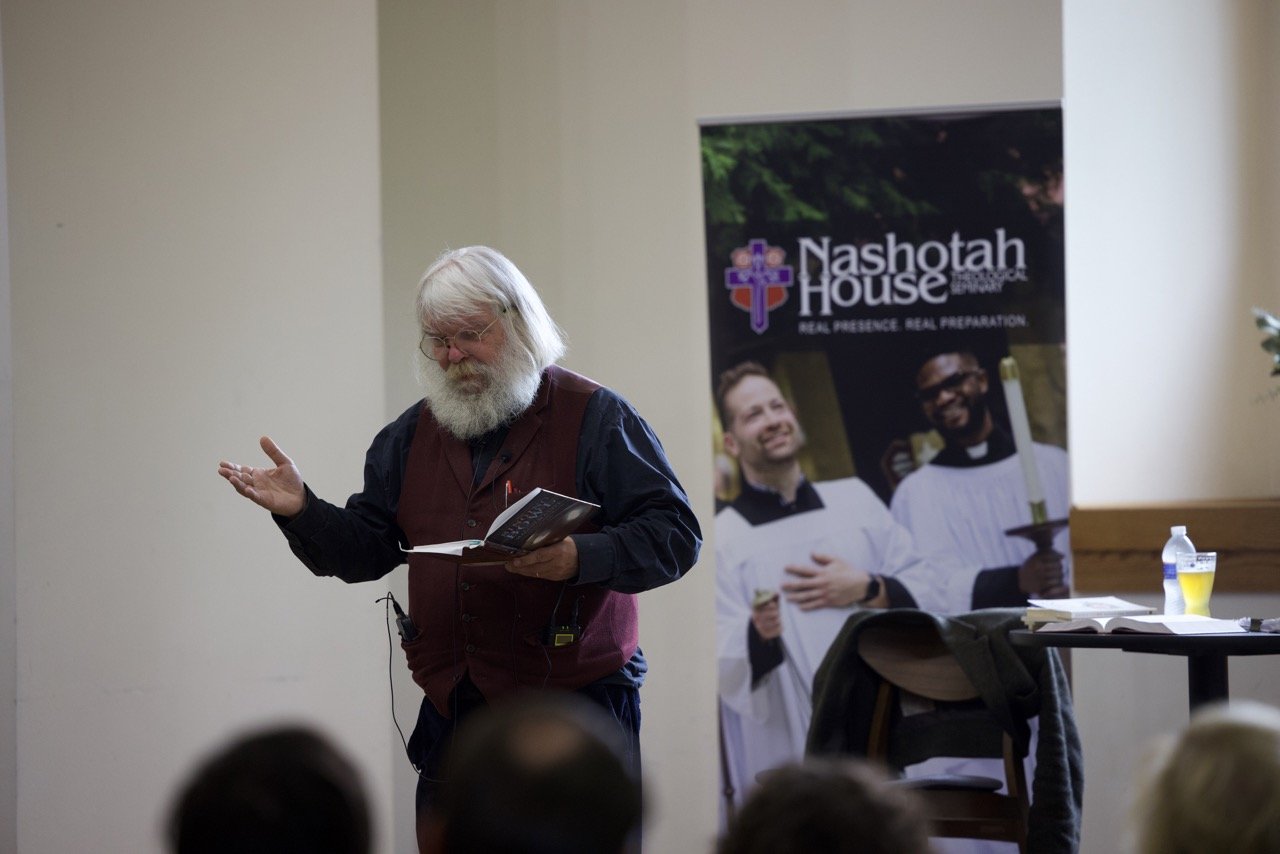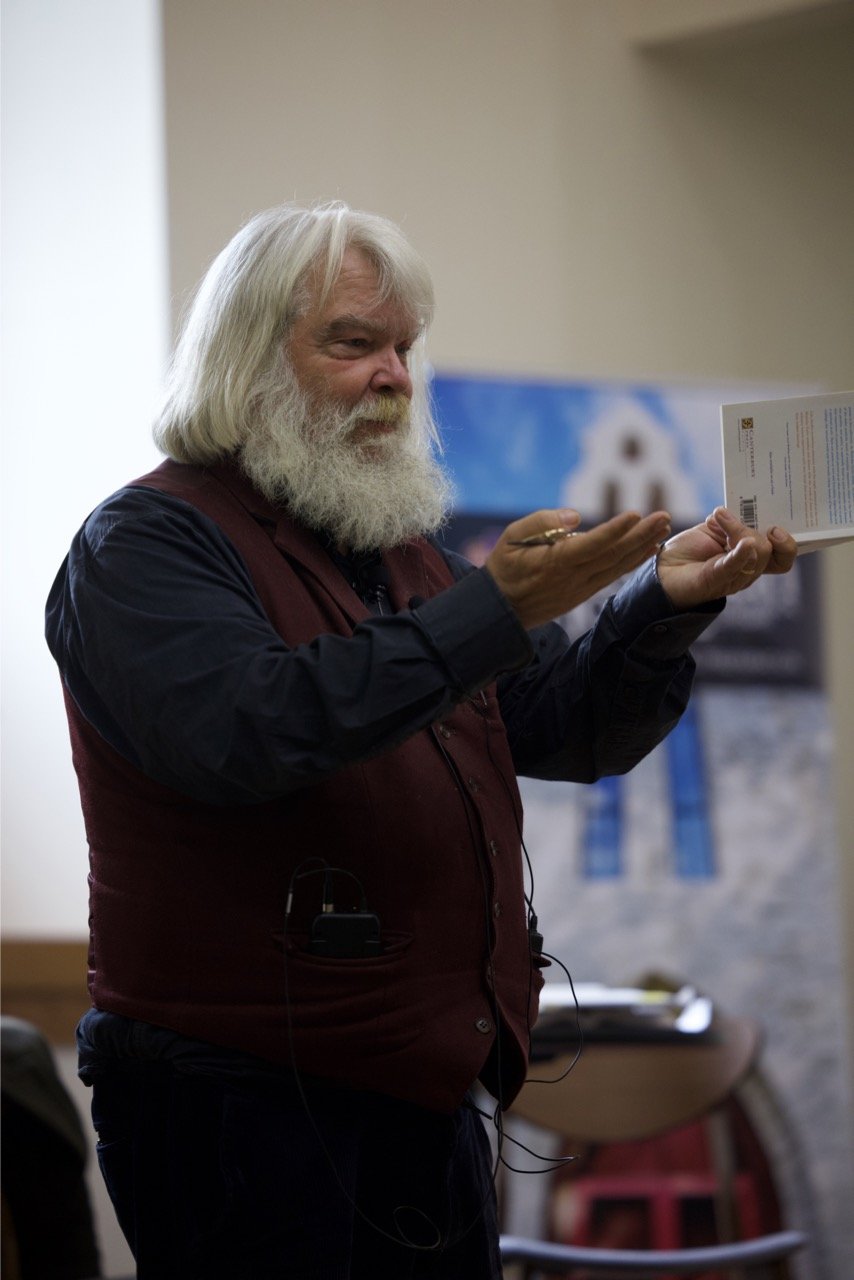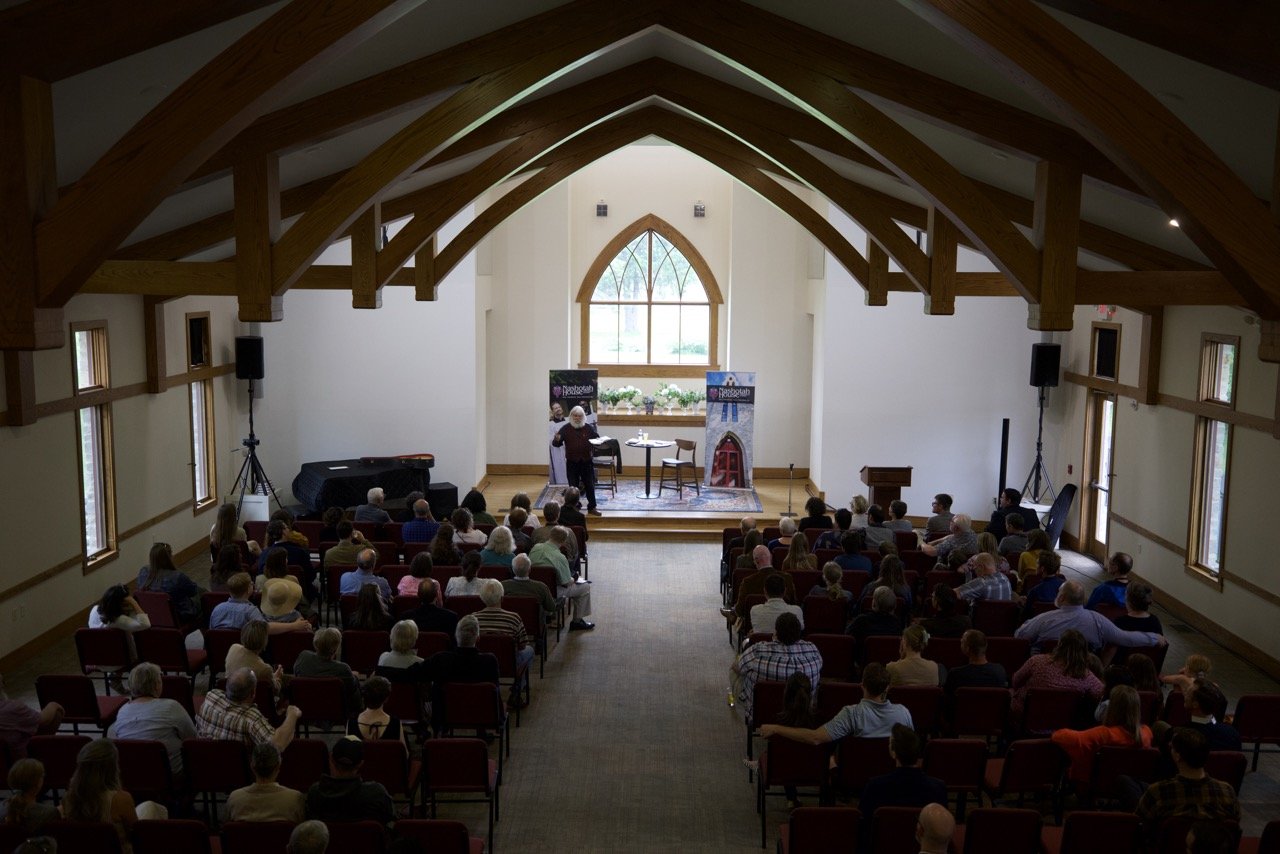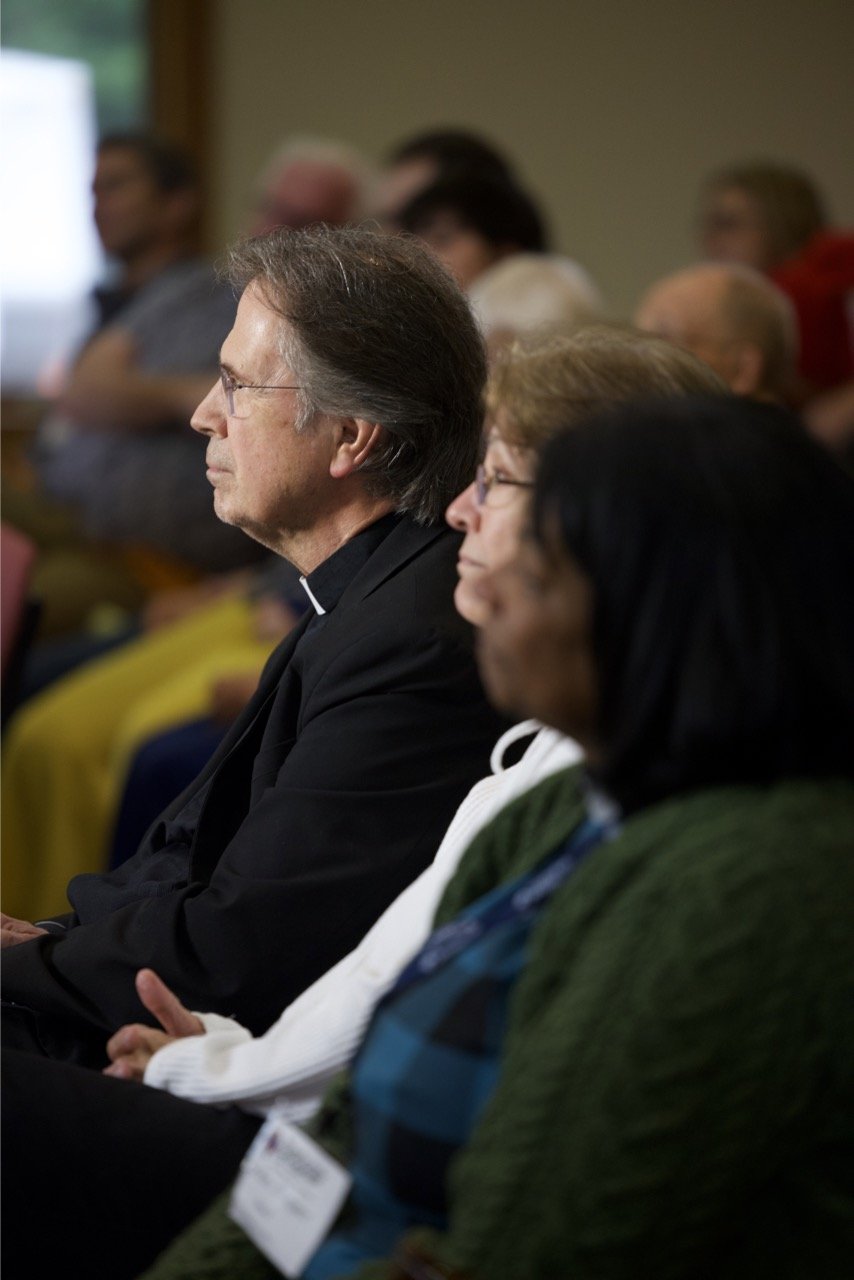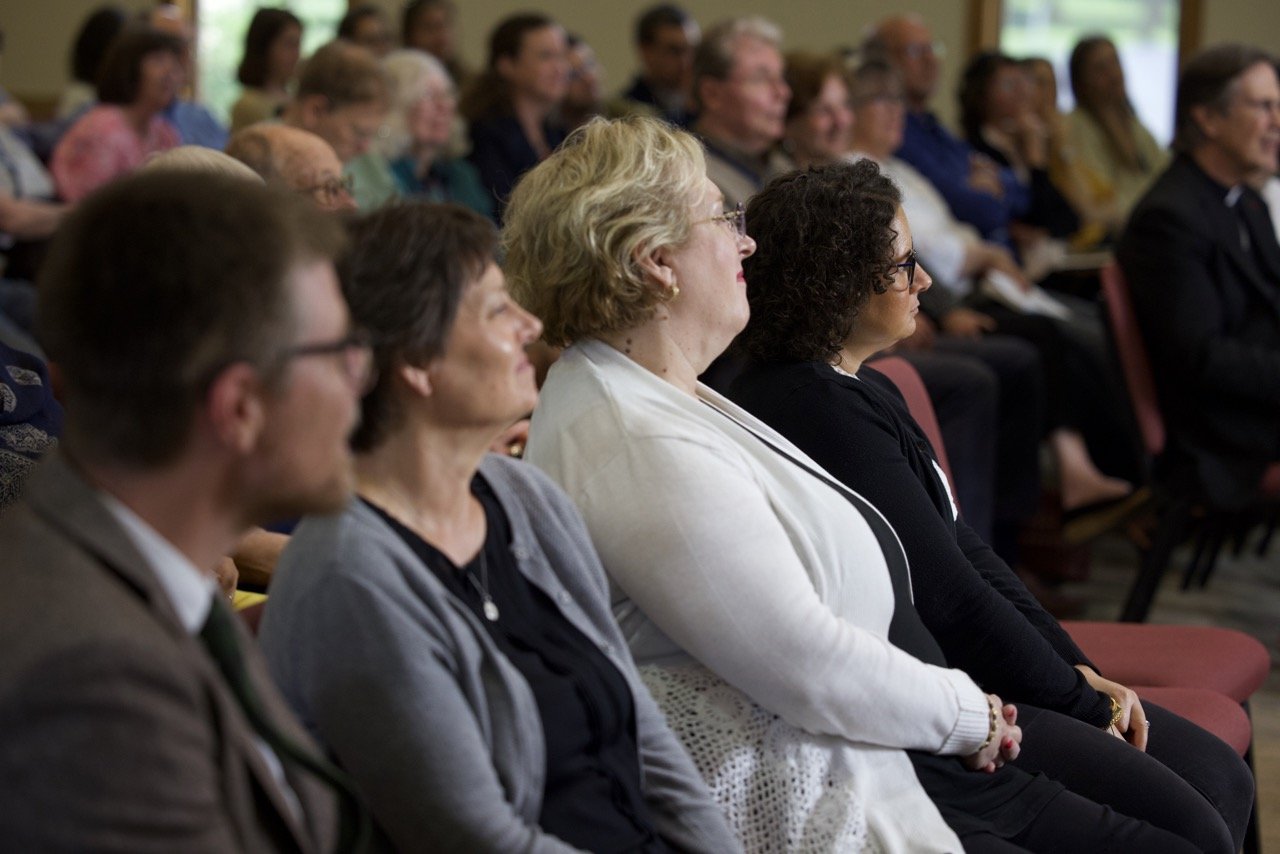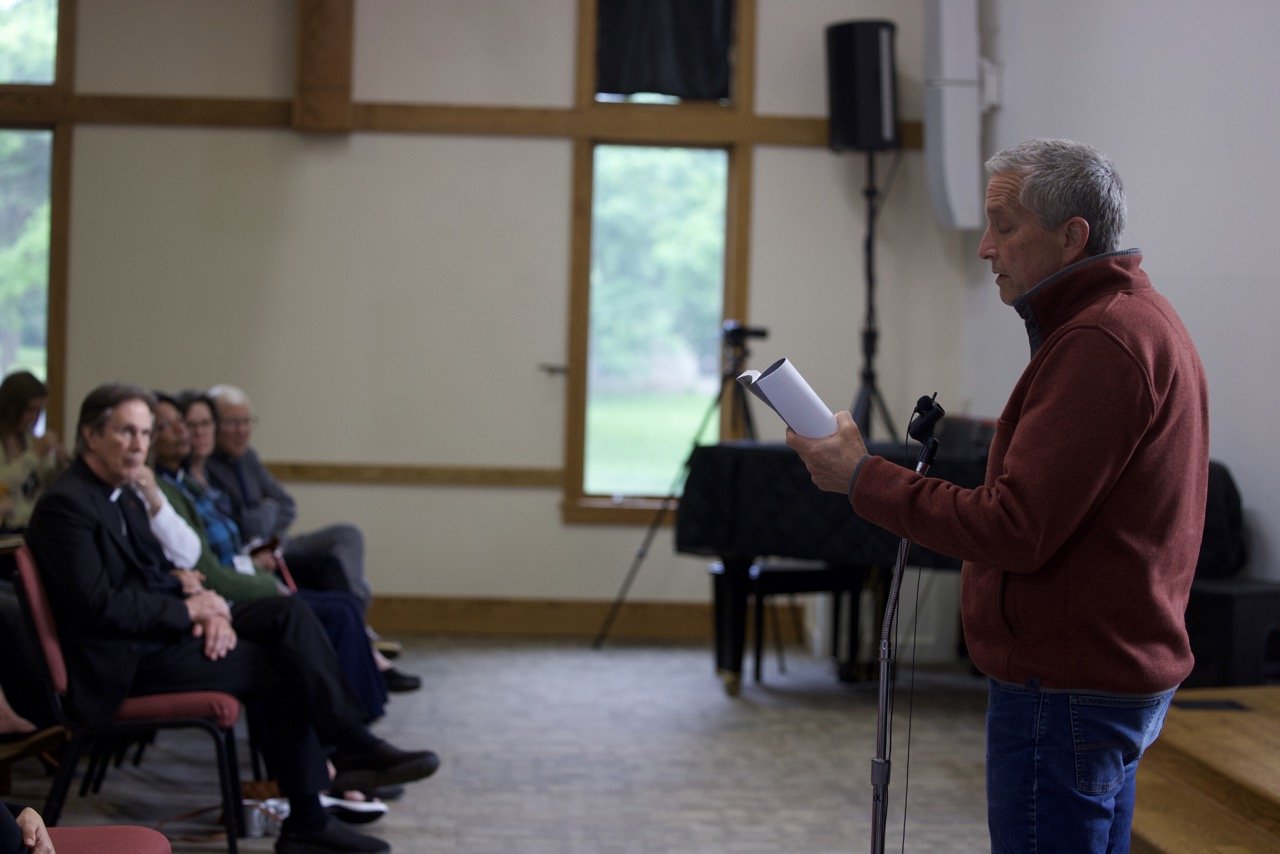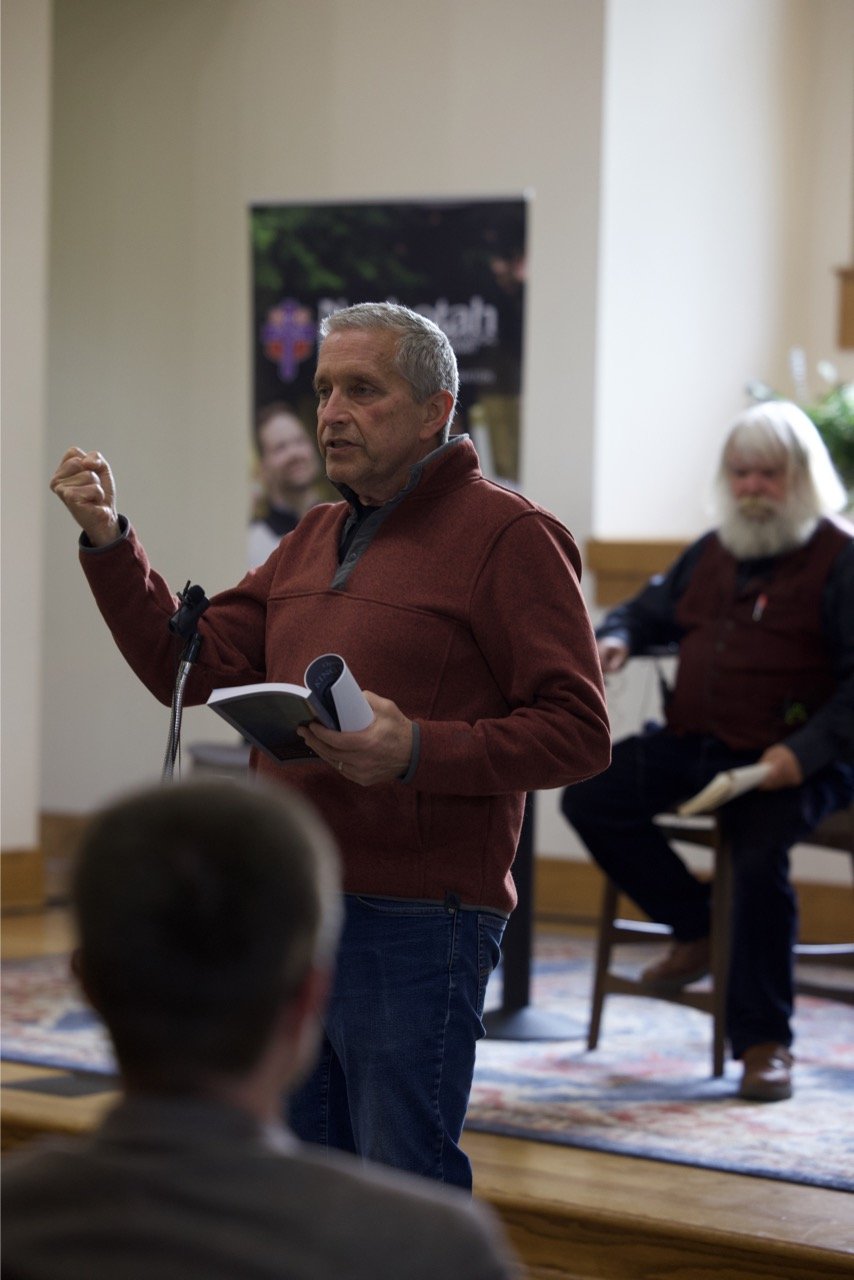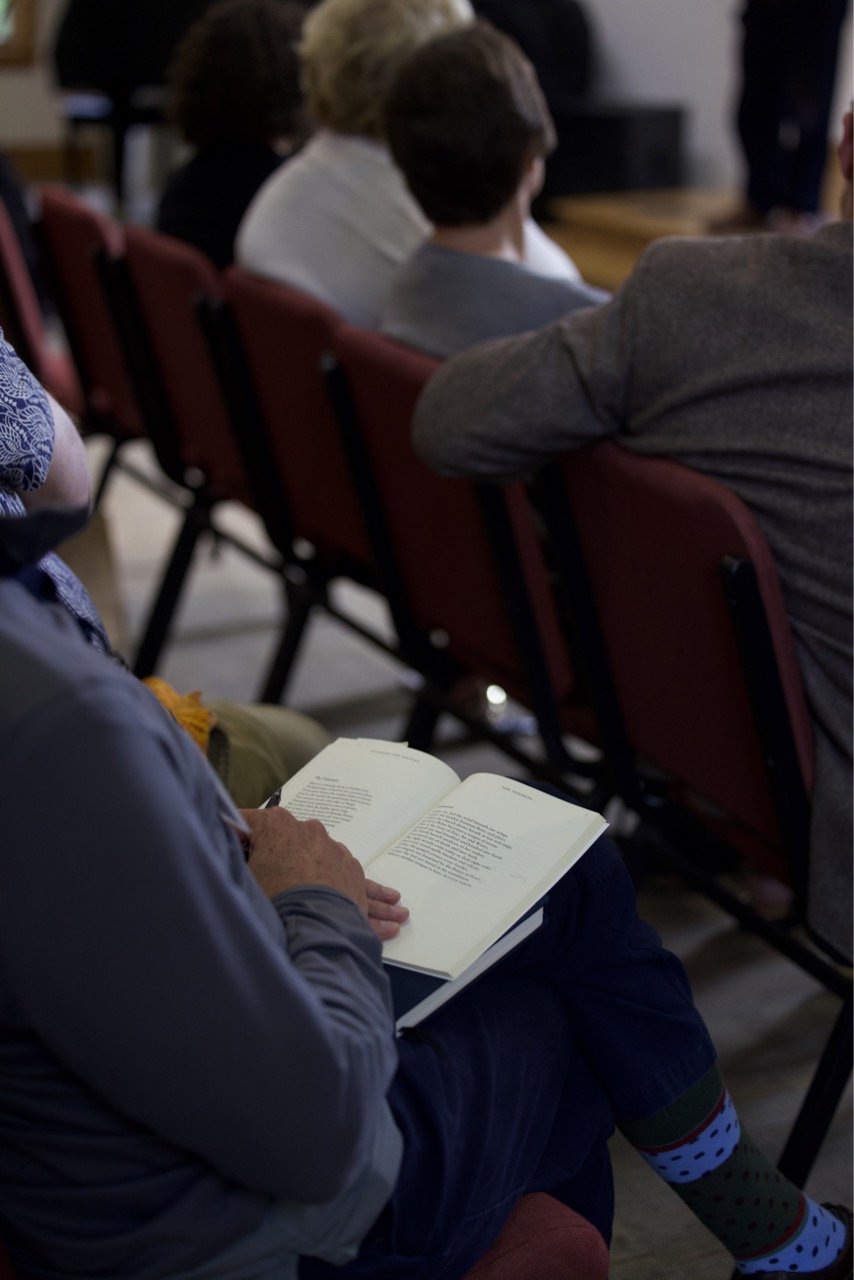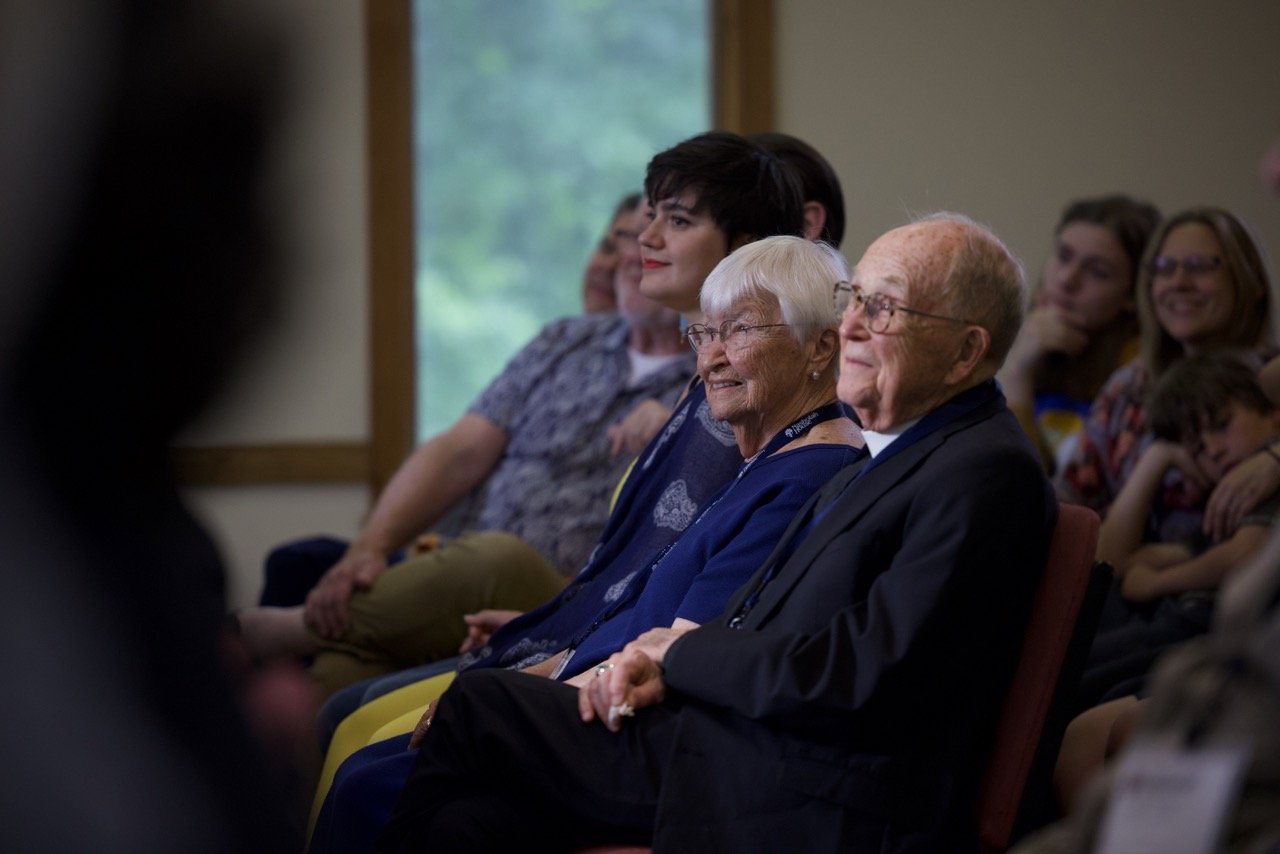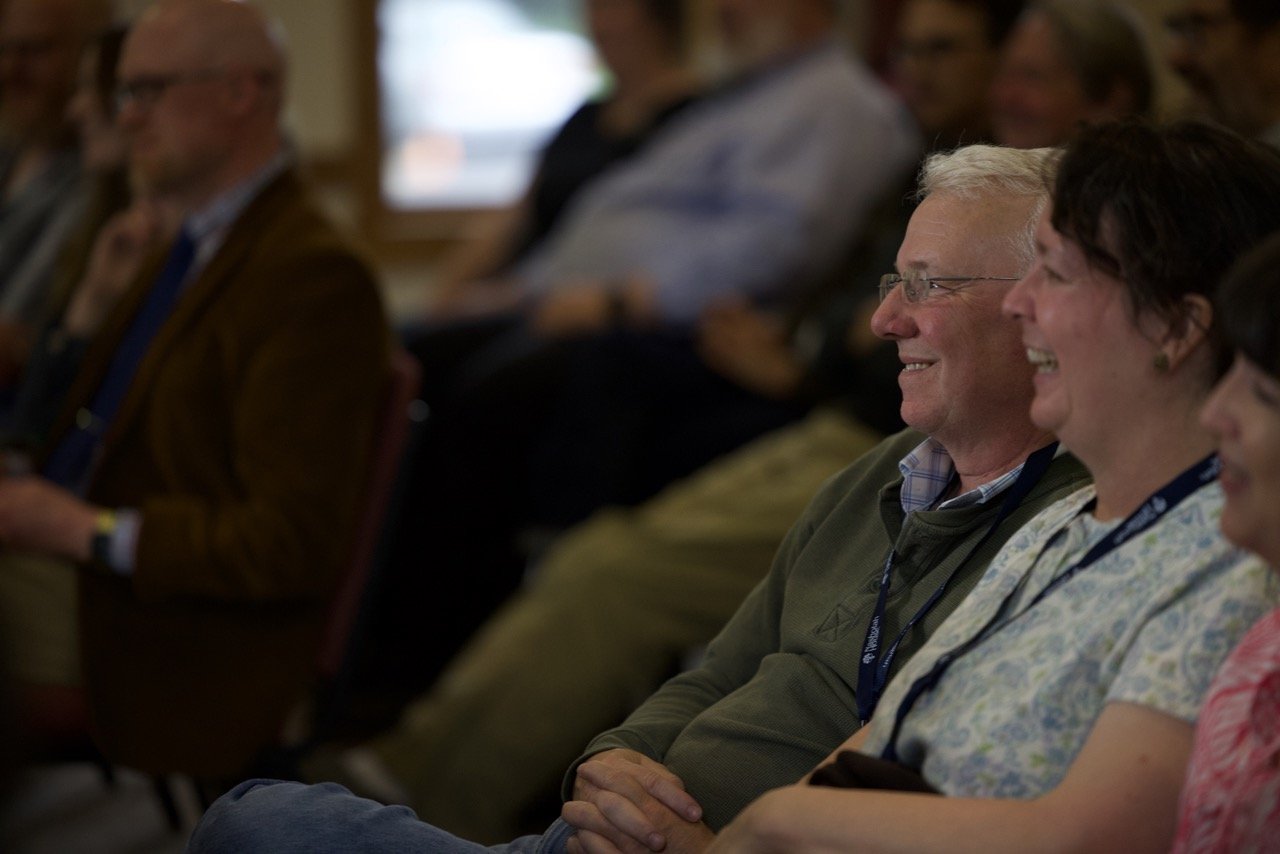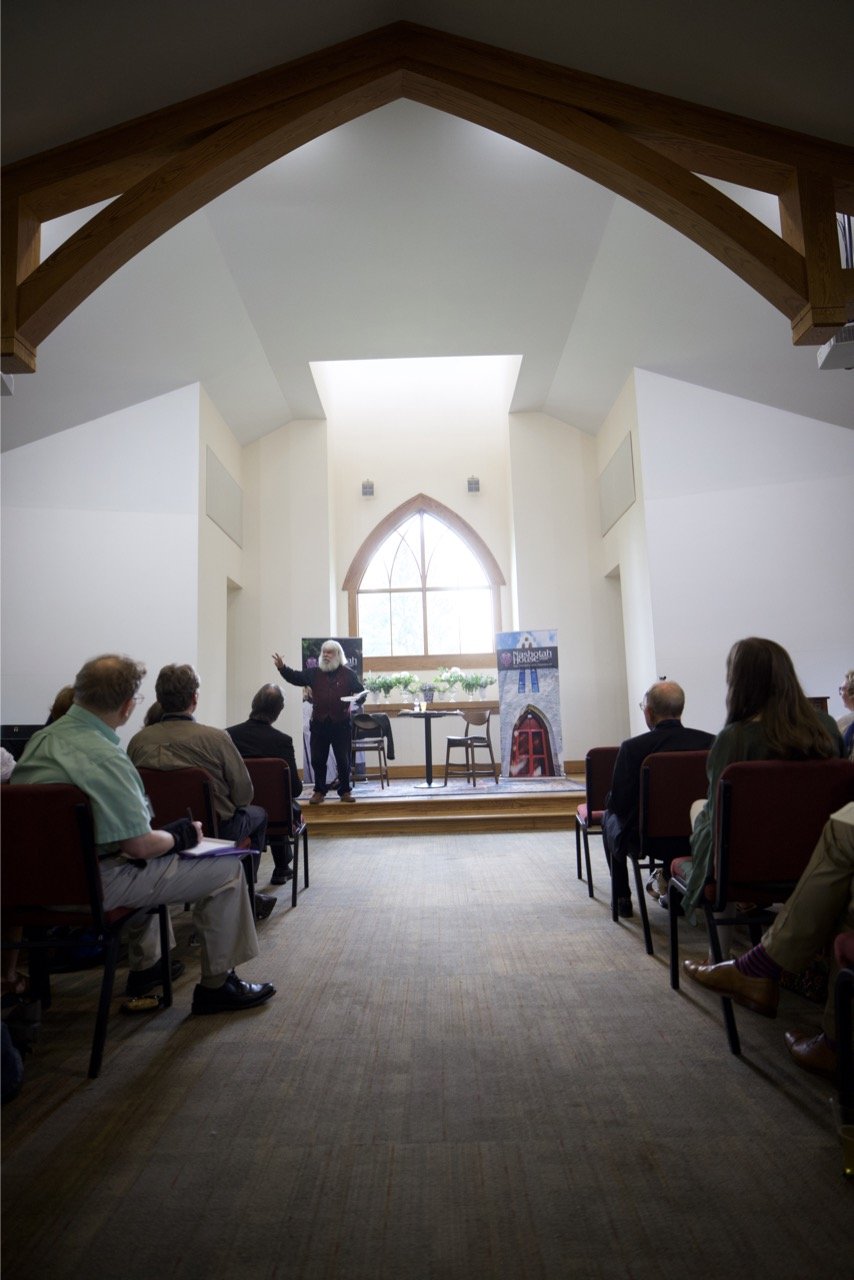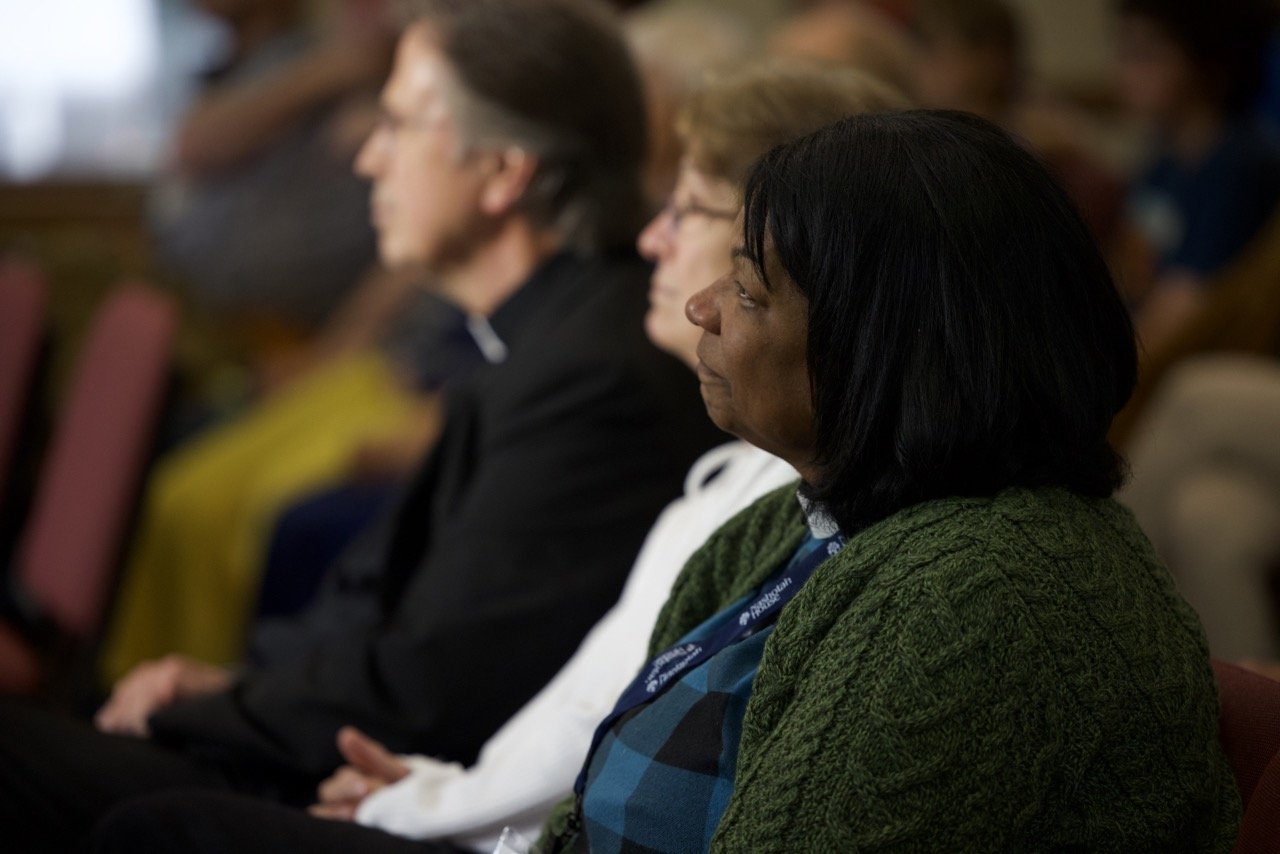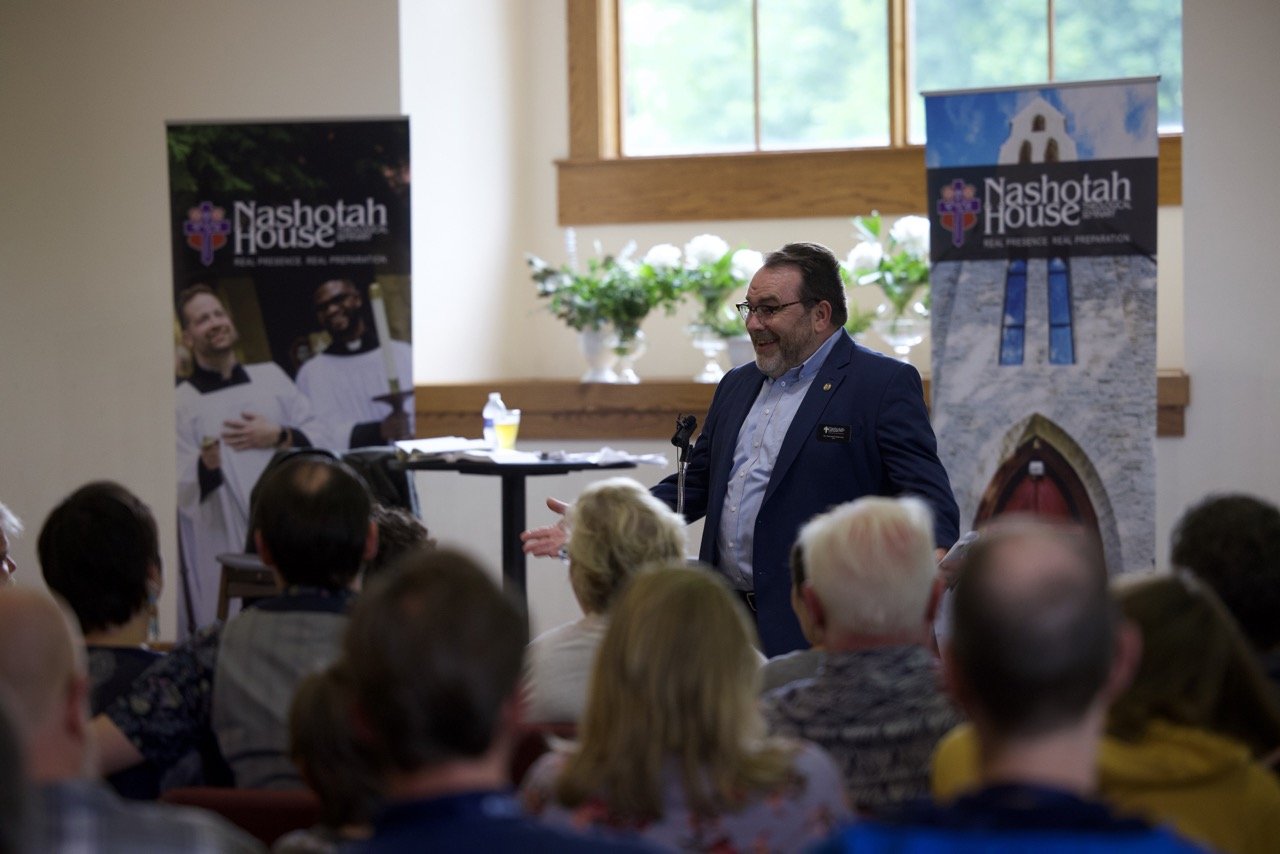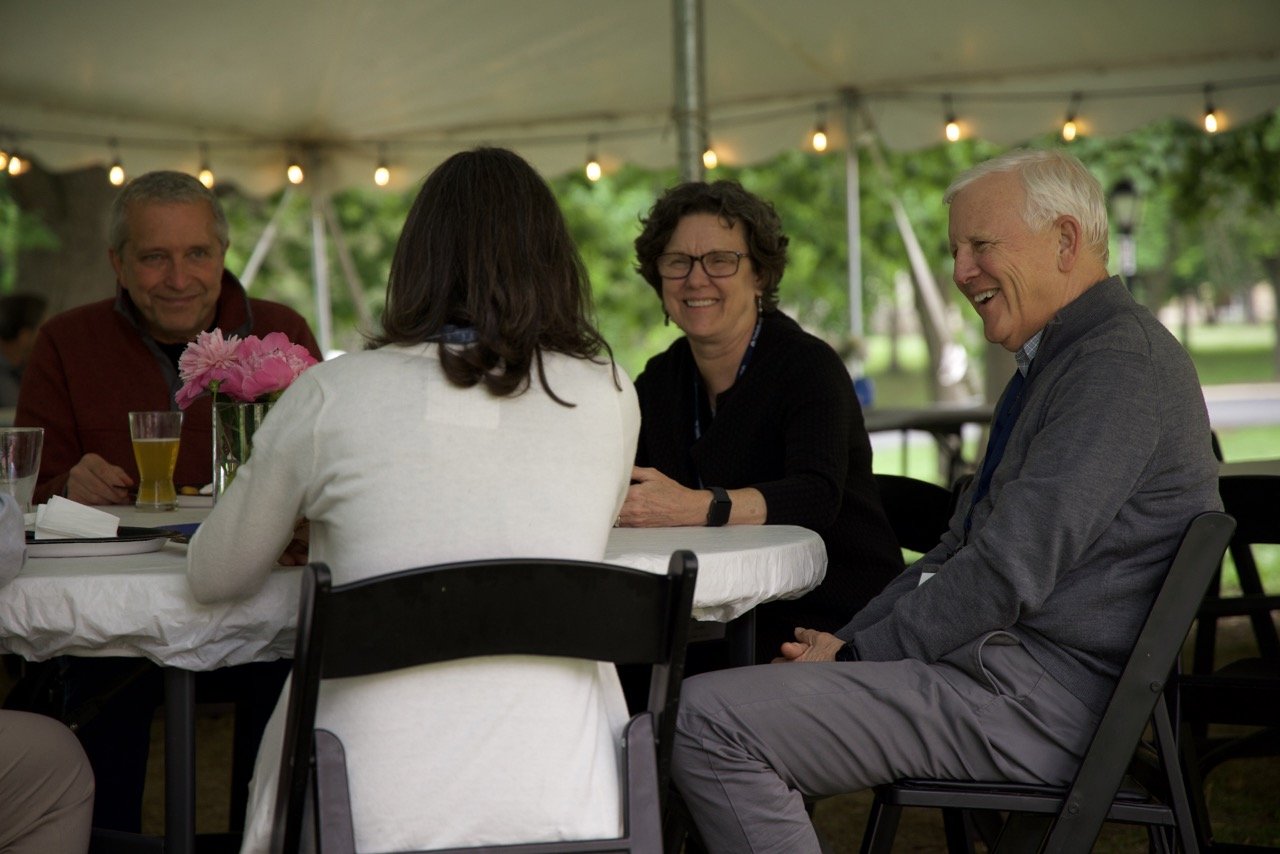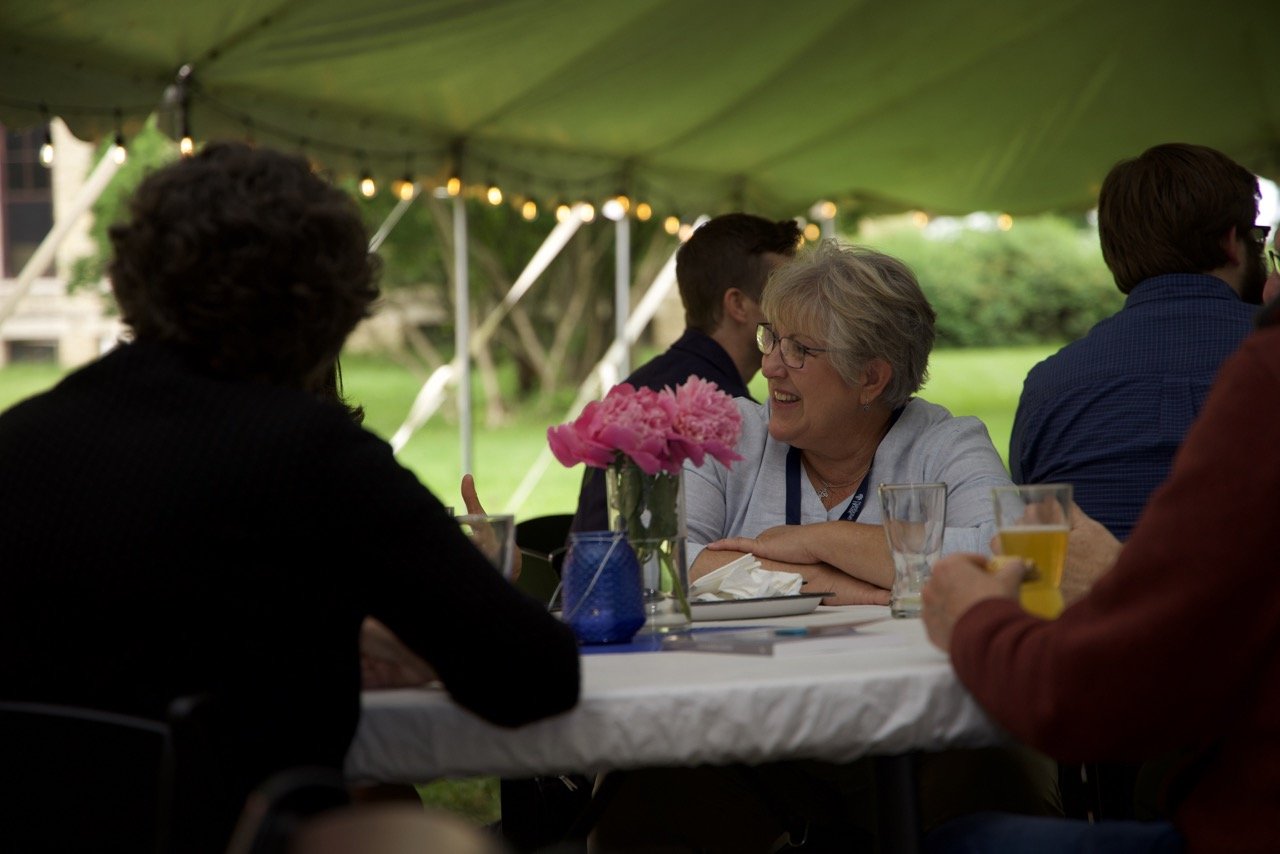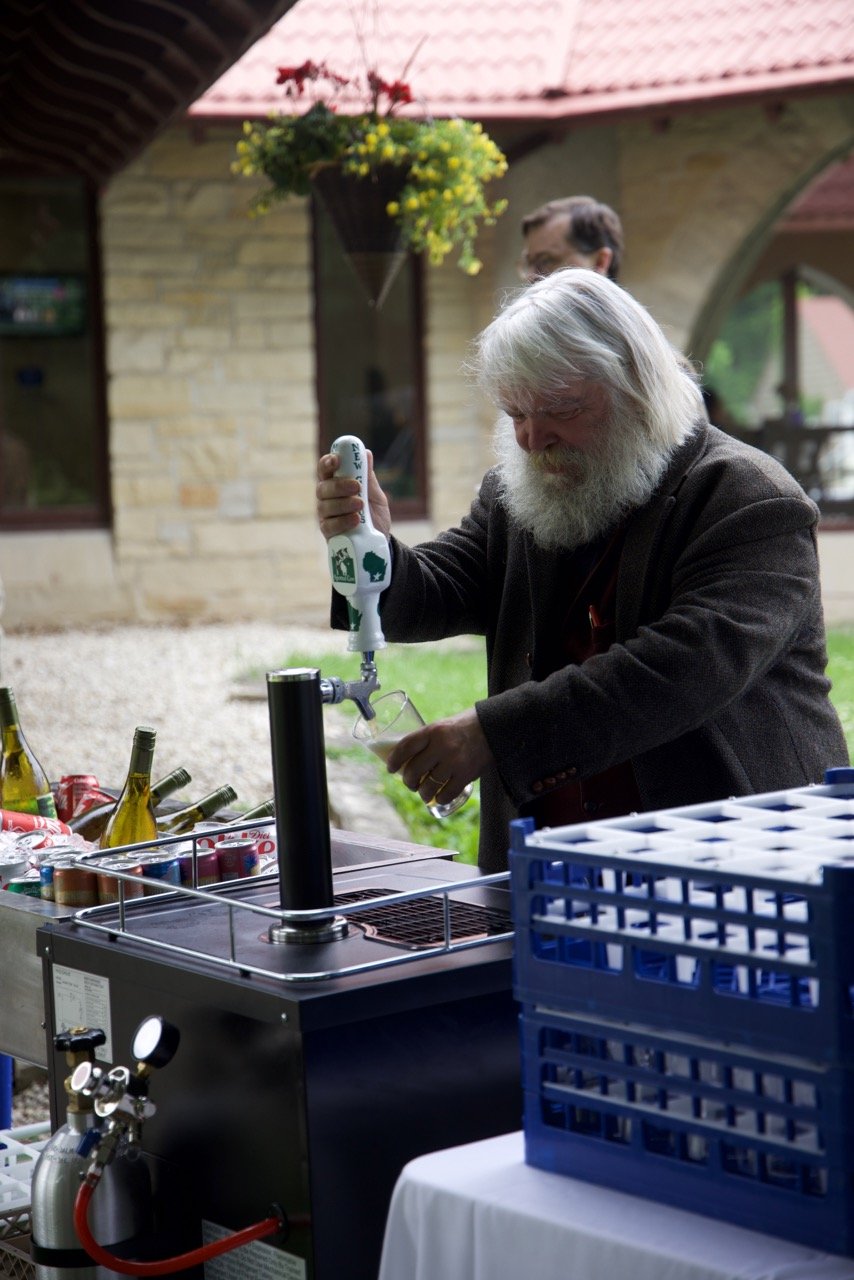Travailing with Truth
The following reflection was written in response to Imagination and the Kingdom of God, a course taught by the Rev. Dr. Malcolm Guite, and Making Something of It, a poetry workshop led by Brad Davis. Both were held on Nashotah House’s campus June 5-7. Photos in the above gallery were taken during a special poetry reading on the evening of June 6 in Adams Hall.
By Alex Kneen
Nashotah House recently hosted Malcolm Guite and Brad Davis, two poets committed to using the poetic imagination to “body forth” the truth that so often eludes us when we settle for mere “glances” at heaven and earth (Malcolm Guite, Lifting the Veil, 21).
While I attended this seminar, I remembered an answer to the question of why the Bible itself includes so much poetry. Dr. Richard Belcher (Reformed Theological Seminary, Charlotte) proposed, “Poetry speaks to our whole person. It feeds our intellect, it stimulates our imaginations, it addresses our wills, and it touches our emotions. It causes us to slow down and think.” As Henri Nouwen described, quoting another theologian in his book The Return of the Prodigal, art is “a calculated trap for meditation.”
I dare to add my voice to Guite’s, that art, rooted in truth, is an invitation to look a little more deeply at something you might not see at first glance.
However, art is not only a “calculated trap for meditation” for the observer. I think it serves the same purpose for the artist. Personally, the songs and poems I write are attempts to give expression to the full range of thoughts and emotions evoked by a particular text as I seek to bring it into real life experience. When I find myself confronted with truths that seem to elude my grasping reason, I have to slow down. I read bible passages over and over again. I struggle over the details of stories and sit uncomfortably with what they reveal. Then, as I attempt to form the rhythm and rhyme giving expression to my thoughts, I find that I am the one transformed.
I would like to offer this poem as a “bodying forth” of two experiences. The first happened at Nashotah House in November of 2021. Only months new into Anglicanism, I began the hybrid-distance program, where I heard Michael the Bell ring out the call to pray the Angelus. This was a strange new way of being and praying for me, fresh out of the reformed baptist world. The second came a few years later while reading Amy Peeler’s book Women and the Gender of God. The Angelus and Amy Peeler’s book both put me in an uncomfortable, unfamiliar place, filled me with questions, and stretched me toward Truth in a way I couldn’t seem to grasp with cold reason. The following poem is a result:
Angelus
The angel ringing God-with-man’s duet
Awakened virgin ears and heaven heard
The Song of Songs refrain when she said, “Let
It be to me according to your word.”
The Word became enfleshed and dwelt among
Kedarite tents, where all our hopes travailed
Within a time and place. The promise hung
Suspended as the blood and water swelled.
Then piercing pain adorned consent with myrrh
Eternity pressed hard into our need
Until the time had fully come for her
To open wide in welcome to the Seed.
Her tearing flesh, creation’s groan unfurled,
She broke, and gave His body to the world.
For those who lean more toward the visual arts, Guite has some encouragement for you as well. His book Lifting the Veil is filled not just with poetry but with visual images. He says, “Imagination is at the heart of all artistic making, knowing, and seeing, whether that art is poetic or visual” (20).
On page 39, he includes “The Isenheim Altarpiece” by Matthias Grunewald, which has been praised as one of the greatest works on the subject of the crucifixion. The painting, in its depiction of suffering, is stunning. Christ’s fingers are grotesquely twisted. His body is pocked with black sores and marred with barbs. His feet seem stretched on the nail, ripping under his weight. His lips have the bluish green color of death. When I first saw this panel online several years ago, my eyes lingered over every detail, and each made an indelible impression.
I wonder what it must have been like for Grunewald to spend days meditating on the suffering and death of the Savior as he painted. How many months did he spend painting the details of Christ’s mangled fingers, or stretching the lines of his muscles insufferably far? What did he think as he smeared black on the canvas to form the tear in Christ’s foot? What was it like to mix paint the color of death? I wonder if Grunewald stepped back from his painting with a greater understanding of Christ’s suffering.
One figure in the painting made a significant impact on the way I think. Grunewald uses “creative license” to insert John the Baptist into the scene. John would not have been there, having been beheaded well before Christ’s arrest and execution. However, Grunewald paints him pointing to Christ’s marred body on the cross with the phrase, “He must increase, I must decrease” painted in Latin above his arm. John directs our gaze to a body limp and disfigured by death. This “calculated trap” moved me to ponder the humble yet unshakable faith expressed here.
While alive, John testified that he was not the light. He was born to shine light on someone else, to direct the gaze of others toward the rightful recipient of all glory and honor. By placing John in the scene, it seems Grunewald communicated that John’s testimony continues. Did Grunewald feel the same about his art? Did he step back from this masterpiece with the hope that his work would not garner him fame, but move others to see and meditate on the greatness of Christ?
Even if you, like me, are not poets or artists of Malcom Guite’s or Matthias Grunewald’s caliber, creating art can still transform us as we take the time to travail with Truth. All forms of art direct our eyes, hearts, and minds toward something. John’s testimony continues to speak in the lives and works of all artists as we seek to direct our gaze to Jesus. They invite observers into their own meditations. By meditating on the Truth, who is Christ, artists so moved by the glory of Christ will, by their work, invite others to do the same.
Alex Kneen is an MTS hybrid-distance student living in Morganton, North Carolina, with her husband, David, and her three kiddos, Rowan (15), Esther (12), and Bastion (11). She serves the church and community in various ways, such as leading worship, writing and teaching Bible studies, composing music, writing articles for various publications, and speaking at retreats. Between family, school, music, and teaching, she enjoys good coffee or a good blonde ale with friends, reading in quiet places, and wandering in the mountains.

